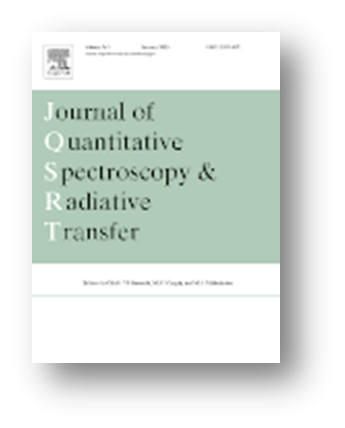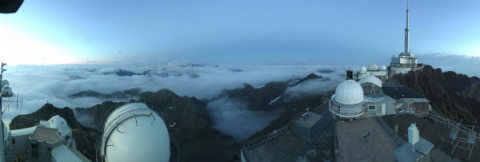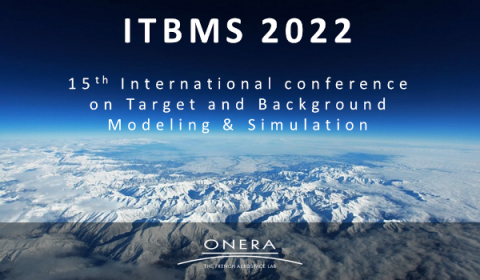PROGRAM The organizing committee of ITBMS 2022 is carefully monitoring the evolution of the COVID-19 pandemic and, with the help of the local resort staff, will set up all necessary prevention and sanitation measures to guarantee a venue where scientific exhanges can be made in a relaxing and safe environment. |
Get connected with hundreds of professionals and researchers in a prestigious location! The 15th International conference on Target and Background Modeling & Simulation is open to people from the research and development community active in the field of optical signature simulation technologies, to military users and industry representatives.
ITBMS 2022 will include various sessions from Tuesday 7 to Friday 10 June 2022 corresponding to the topics defined below. Keynote addresses will be delivered to set the underlying tone and summarize the core message. These speeches will be done by specialists from laboratories and international companies recognized for their expertise in the field.
Software training sessions from our sponsors (OKTAL-SE, THERMOANALYICS, DAVIS ENGINEERING) are also planned. The topical session objectives are to provide an opportunity for the software end-users to learn about the latest developments and, offer the opportunity to demonstrate and discuss the latest features in software products.
Due to the localization of the workshop, a special session will be devoted to optical signatures and related technologies in a turbulence context. Submission of research abstracts is encouraged. A JQSRT special issue (CiteScore: 2.96, Impact Factor: 2.955, 5-Year Impact Factor: 2.883) will be published after the conference. Contributions are not mandatory but encouraged. Research papers will be peer-reviewed following the same procedures and standards as all usual JQSRT contributions. This is not a proceeding volume.
General Conference Objectives
- Provide a European scientific forum for the modeling and simulation community to discuss current developments in their field of expertise
- Foster an intensive exchange of ideas and results in modeling and simulation and help building up and maintain the information network in the community
- Encourage cooperation between groups actively engaged in this field
The conference is co-organized by ONERA, The French Aerospace Lab and Fraunhofer IOSB (Institute of Optronics, System Technolgies and Image Exploitation) in close cooperation with companies having highest expertise in the field of modeling and simulation.
TOPICS
Submission of research papers is encouraged. Contributions are solicited in subjects ranging from basic signature research to applications in system design, optimization and evaluation:
- Data, techniques, models, and validation of signatures of land, sea and air targets and backgrounds, and of targets in backgrounds
- Extension to polarization, hyperspectral and active signatures
- Optical properties of complex surfaces
- Models validation and metrics
- Signature management models (infrared, spectral, passive and active)
- Modeling and simulation of clutter (soil, maritime, atmospheric)
- Radiative transfer, propagation models and optical data sets
- Turbulence modeling and effects on simulation
- Impact of climatic conditions on signatures
- Active / Laser imaging systems
Due to the localization of the workshop, a special session will be devoted to optical signatures and related technologies in a turbulence context. All sessions of the conference will be unclassified.
ITBMS 2022 - Special focus on turbulence effects
Image data experiences geometric distortions and spatial-temporal varying blur due to the strong effects of random spatial and temporal variations in the optical refractive index of the photon path. Simultaneously removing these effects from an image is a challenging task.
The effects of atmospheric turbulence severely degrade image quality in the form of geometric distortions and space-time varying blur, especially in long-distance surveillance applications. Atmospheric turbulence occurs due to the turbulent flow of air cells as described by fluid dynamics and is observed throughout the extent of the atmosphere. It is particularly evident in the troposphere layer because of continuous and rapid changes of temperature and pressure near the ground surface of the earth and the air directly above it. Hence, turbulence at ground levels, known as the atmospheric boundary layer, are more severe, particularly in hot and dry environments, and their effects are more pronounced compared to that of upper layers. To address this problem, several approaches including hardware-based adaptive optics techniques and image-processing-based methods were developed to restore captured images. Due to the continuous change in the turbulence profile and the random evolution of turbulent eddies, the optical transmission path is continuously degraded.
From physical description to restoration tools... The ITBMS conference will address both theoretical and experimental approaches to start discussions with the attendees.






